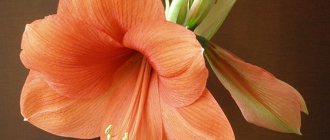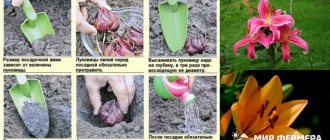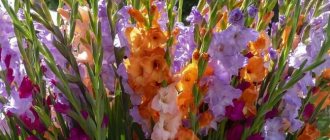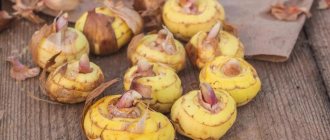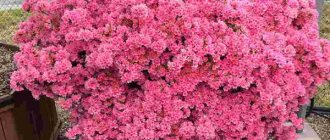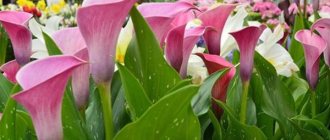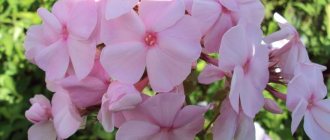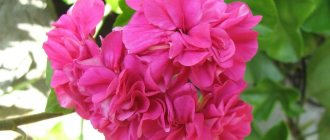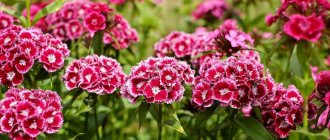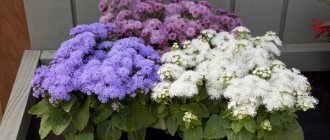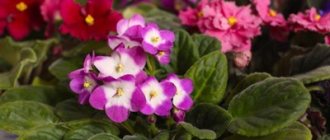Hippeastrum is a tropical plant of the amaryllis family and is found naturally in the Amazon basin of South America. In our climate, this bulbous flower can be grown in pots at home and planted in open ground for the summer. In order for a plant to bloom long and well, it definitely needs a period of rest - once a year for 3 months. Rest time is from October to January. Proper care of hippeastrum in the fall and sending it to rest will help keep the bulb healthy and form a strong flower arrow with large flowers by the next season.
Substrate
To plant the bulbs you will need a light substrate. If possible, it is better to cook it yourself. To do this, for 1 liter of soil mixture you need to take 2 parts of leaf soil, 1 part of coarse sand and 2 teaspoons of superphosphate. Phosphorus is necessary for the plant to bloom brightly and spectacularly. Add half a teaspoon of dolomite flour and 2 teaspoons of ash. Mix everything thoroughly.
If it is not possible to make the substrate yourself, you can take ready-made soil for flowering plants.
Winter care rules at home
Those Hippeastrums that do not sleep in winter or wake up in January need care. It is important to keep them not on a frozen window, but at some distance from cold glass. It is important that sunlight falls on them.
Drafts will also damage plants. Water moderately; you can simply stop watering for a month or a month and a half. Flowering plants can be provided with additional lighting .
Dormant plants do not require care. After a month of rest, they need to be examined every week so as not to miss the moment of awakening.
Bulb
It is recommended to prepare the bulbs for planting at the end of February. To do this, you need to remove all the old soil and carefully inspect the bulbs. Rotten parts, if any, should be removed if they did not fall off with the old soil. Clean the neck and bottom of old scales, this is where all the infection accumulates. We cut off dead roots; those that are too long can be shortened slightly. If you find a fungal infection, you need to treat the plant with a fungicide and then dry it for 3-4 hours.
Viable children, if they are formed, must be carefully separated and planted in separate pots.
Why doesn't the plant go to rest?
Bulbs up to three years of age and those with less than 4 leaves do not need rest . They can be left in their place and watered in moderation.
Sometimes mature plants feel good after flowering, grow foliage and are not going to retire. If they continue to bloom, there is no need to worry, it means the flower has such a rhythm of life.
If Hippeastrum does not retire, but does not bloom, it must be forced to rest.
Watering
Watering should be moderate until the flower shoot or a sufficient number of leaves grow. Very carefully, without pouring on the onion itself, but only along the edge of the pot, you need to water the freshly planted onion with warm, settled water.
Watering is carried out in this way only for the first time. Subsequently, twice a week, the pot is placed up to its shoulders in a bowl of water. The bulb and soil in the pot will absorb as much moisture as required.
The pots are placed on a well-lit windowsill, but the plant must be protected from direct sunlight, otherwise burns may occur. The room temperature should be moderate, from 17 to 23 ˚С.
Hippeastrum needs good lighting even after flowering, since without it the bulb and seeds in the box will not be able to fully ripen for the next planting.
How to send a plant to sleep if it doesn’t go to sleep on its own?
Hippeastrum must sleep , this is the only way to regulate its flowering period and improve vegetative development.
They do it in different ways:
- Stop watering and remove from light. After 3-4 days, remove the plant from the pot, wrap it in several layers of newspaper and put it away in its sleeping place.
- Having stopped watering, place the pot in a cool, dark place on its side, as if putting the plant to sleep. Place the pot vertically after 3 months.
- They simply move the pot into the pantry or underground and forget about it for 2-3 months.
Wake up the plant using standard methods: take it out into the light and begin to water it little by little.
Types of hippeastrum
There are more than 2000 species of this plant. Moreover, each of them often has different flowers. But the most common is the Palace type. It can most often be found in houses and apartments. It has a juicy and large peduncle, bright scarlet flowers. But it is also divided into such types as:
- Red with narrow green stripes on the flowers.
- The royal has pointed flowers and is often a tall plant.
- The columnar type has flowers of an orange-pink hue, very delicate.
In addition, plants are often classified according to their origin, flower shape and other indicators. Hybrids are represented by such groups as: mixes with orchids, combinations with belladonna. There is also a hybrid called "Leopold" and others. But most often the following types of this plant are found in rooms and interiors:
Harrison
A species native to Uruguay. The flowers have a white tint, with a thin red stripe running down the center of each flower, making the plant very striking. Whimsical, difficult to care for. High soil and air humidity are required, but temperatures should not be high. Feels uncomfortable in a hot room. Need coolness.
Nelson
Quite a rare species for natural conditions. But in Bolivia you can still find it. It has a very interesting shape and amazing color. The petals of each flower are cream-colored and have a deep red edge. Care is also quite difficult, with frequent watering.
View Doran
The Doran species grows in nature along the banks of the Orinoco River (South America, Venezuela). The petals of each flower are bright pink, edged with white stripes. It looks very impressive. But, like others, this variety is demanding in care.
Argentine variety
It has very original flowers with corrugated petals. The flowers are usually white and often have a subtle, delicate aroma.
Almost all types of hippeastrum emit aromas when flowering. With proper and competent care, the plant blooms at least once a year, sometimes more often.
Which ready-made mixtures are suitable, how to choose?
The advantages of the finished substrate are that it is cleared of debris and has undergone preliminary disinfection treatment.
The most suitable mixtures:
- Polessky universal substrate , packaging from 10 l; composed of clay, quartz sand, high-moor and low-lying peat.
- Peat substrate ECO PLUS universal , from 20 l; (ready-made mixture of purified sand, peat, and a complex of mineral fertilizers).
- Professional unpressed substrate RL-1 , 20-80 l. It contains a mixture of peats, agroperlite-raising agent, and limestone flour.
Where to start caring for hippeastrum in the fall
Already from August - September the plant needs to be prepared for rest. From this time on, it is watered less often and from the beginning of autumn, watering and fertilizing are completely stopped for 1 month. During this time, the leaves will naturally begin to wither and turn yellow.
To be able to better build up the root mass, after flowering the stems need to be cut off and seed pods should not be allowed to form. In the summer, after the flowers have withered, you can apply phosphorus-potassium fertilizer. This will strengthen the bulb.
Autumn plant care includes the following manipulations:
- Excavation of hippeastrum.
- Leaf trimming.
- Cleaning each onion.
- Treatment for disease prevention.
- Drying the bulbs in the room.
- Cleaning for storage.
Let's look at all the stages in more detail.
Digging up hippeastrum in preparation for winter
Home care for this tropical plant should include cleaning up for storage after the long flowering season has ended. In nature, there are also ever-flowering representatives of amaryllis, but almost all varieties that we sell need a period of rest for some time in order to accumulate strength and recover.
If a flower grew in the open ground in a flower bed in summer and bloomed again, it should be given more time to prepare for hibernation. You need to wait until the leaves fade on their own.
Dig up bulbs after frost - closer to November.
Indoor flowerpots will need to be sent to winter on their own and you will need to start preparing for this in August, reducing watering. After the soil in the pot dries out, a month after the cessation of moisture, the flower is removed from it and cleaned of soil.
Pruning hippeastrum before wintering
Yellowed leaves on the bulbs need to be cut off at a height of 2 - 3 cm. If it is necessary to adjust the time for forcing the plant, you can begin to retire it earlier. To do this, it is possible to trim leaves that are still green.
Important! The longer the foliage remains on the bulb, the more nutrients will go to the root. It is better to let the leaves wither on their own.
Bulb stripping
After trimming the leaves, you need to remove the roots. The bottom is cleaned completely, cutting off the roots with a sharp knife. The top layer of scales must also be removed. This will help get rid of the soil and any pests or microbes that have settled there. After peeling, you should be left with a white, clean onion.
Treatment for diseases
Already cleaned hippeastrum bulbs need to be placed in a solution of preparations for disinfection. To prevent or treat pest damage, use insecticides. A solution of “Aktara” and “Beetle eater” will help against the most common enemy of hippeastrum - mealybugs - 4 ml and 3 mg of each, respectively, per 5 liters of water. Dilute each separately and then mix together - you get 10 liters.
Dip the bulbs into the resulting solution and leave in it for a couple of minutes. The liquid will saturate them and destroy microorganisms that have penetrated between the scales.
After this, immerse the bulbs in a fungicide solution to prevent the appearance of mold and rot during storage. For example, “Maxim” is suitable, dilute 4 mg in 2 liters of water.
Drying
After processing, the bulbs can be laid out on newspaper and left indoors to dry for a couple of days. They must be completely dry before storing.
Laying hippeastrum for wintering
Dried bulbs must be stored in a cool, dry, dark place for 3 months. at this time.
To prevent the bulbs from drying out, they can be put in a box and sprinkled with dry sawdust, covered and placed in a room with a temperature of 10 - 15 degrees. Humidity should be at 50 - 60%, but not more than 80%. If the temperature is below +5, the bulbs will be damaged, if above 18, they will wake up faster and release the stem.
During storage, the hippeastrum needs to be checked periodically; as soon as the leaves appear, it is planted in a pot slightly larger in size than an onion, and they begin to water it. Young plants overwinter in a pot with soil, which can be watered once per winter. Place it away from windows and radiators.
As you can see, caring for hippeastrum in the fall is not difficult, but it is very necessary for the plant to lay a strong flower bud and bloom well the next year.
Reproduction
Hippeastrum is propagated by daughter bulbs - children. In December - January, the mother bulb usually produces 1-2 additional bulbs. Small bulbs are separated from the mother bulb when they have their own roots. Small bulbs are planted in small pots and grown without a dormant period for about 3 years.
Hippeastrum can be propagated by seeds. Such plants do not repeat the varietal characteristics of the mother plant, but can produce interesting and new hybrids. You can pollinate different varieties and create your own hybrids, but you need to wait 3-4 years before the first flowering. Hippeastrum seeds are sown immediately after collection. Hippeastrums obtained from seeds are grown for 3 years without a dormant period.
What problems and difficulties may arise?
When breeding a flower, the following problems may arise::
- When dividing an insufficiently large bulb, the plant may not develop, because it has not accumulated enough nutrients.
- If you use unsterilized instruments, there is a high probability of contracting fungal infections.
- If the cut is unclear, when the baby is separated into the bulbs, putrefactive processes may develop at the cut sites.
- When using warmly stored seeds, their germination rate will be very low; it is better to take freshly harvested seeds or seed stored in laboratory conditions.
It is quite possible to propagate hippeastrum at home. However, it should be remembered that its flowering begins after several years when grown at home. It is preferable to choose a vegetative propagation method, and propagation by seeds only to obtain new varieties.
How to wake up a flower after wintering?
As soon as the plant begins to throw out a peduncle, it needs to be taken to a permanent place and watering and care begin. If necessary, transplant into a new pot.
If the plant does not wake up by the appointed time, which is February or April, depending on the time of sending to rest, it will have to be awakened. To do this, take the flower pot to a warm sunny place and start watering. After 20 days or less, the flower will begin to produce its first leaves. Do not leave water in the tray. Otherwise, the bulb will begin to rot.
By following these simple rules of care and maintaining a period of rest, you can achieve good development and flowering from your phytopet.
Pests and diseases
The following pests most often attack hippeastrum:
- Narcissus fly (Lampetiaequestris ) - its larvae destroy the insides of the bulb. Insects are active from spring until the end of June, so until then it is better not to take the plants outside.
- Thrips feed on leaves. Symptoms include silvering of leaves and black lumps of droppings.
Common diseases of hippeastrum:
- Red spot is a fungal disease caused by the fungus Phoma narcisii (synonym Stagonospora curtisii). Symptoms: red spots on onion skins, roots, base of leaves. This is the most dangerous and most difficult disease to fight. Fungicides can be used, but there is no guarantee of getting rid of the fungus. The fungus spreads quickly, causing slow growth and death. The development of the disease is favored by cold temperatures and excessive deepening of the bulb during planting.
- Rotting of roots and bulbs - the cause of the disease is too wet a substrate, excessive watering. Rotting parts can be removed, a fungicide applied, or the substrate changed. Rotting stains can be sprinkled with cinnamon after cleaning.
- Mosaic disease is a virus that causes discoloration and streaking on leaves and flowers. The diseased plant must be destroyed.
Landing
When to plant?
Hippeastrum can be planted from October to May. Planting material is planted in the ground a month before the planned flowering date. It is preferable to plant the plant when daylight hours begin to noticeably lengthen - from the end of December. The longer the daylight hours, the more abundant the flowering.
Advice. If you purchased several bulbs, do not plant them at once, but at intervals of about two weeks. Then they will not bloom at the same time and will delight you with flowers longer.
For those who want to get a blooming hippeastrum for Christmas, the Christmas Gift and Merry Christmas varieties have been specially bred - ideal Christmas gifts for lovers of potted flowers.
Preparing the bulbs
Before planting, the bulbs should be rinsed for a few minutes in warm water to prevent the development of nematodes. During washing, the dry upper scales usually come off, and a beautiful light green bulb appears to our eyes if it is healthy. After washing, before planting, you should treat the planting material with a fungicide and wait until it dries.
Soil preparation
The optimal substrate for hippeastrum should be:
- humus;
- permeable;
- disinfected;
- with pH 6-7.
You can use ready-made mixtures of so-called universal soil for indoor plants and add garden chalk and perlite to it. Peat and coarse sand mixed in a volume ratio of 1:1:1 can be added to the substrate.
In an acidic substrate with a pH less than 5.5, hippeastrum takes root poorly and flowering is delayed. Therefore, it is recommended to maintain the pH at 6-7. Calcium deficiency affects shoot fragility. Before planting, the substrate should be watered abundantly.
Choosing a pot
The pot for hippeastrum should be slightly larger than the bulbs. When choosing a suitable container, it is necessary to take into account the rather large size of the bulbs, which can reach 20 centimeters in diameter.
The pot is selected so that there is a distance of 2 fingers (about 4 cm) between the bulb and the edges of the container on each side.
Containers must have drainage holes; be sure to add a drainage layer (expanded clay, small pebbles) to the bottom.
Planting, post-planting care
We do not bury the bulb deeply so that leaves and peduncles can grow freely from the top. Plant so that 1/3 of the bulb sticks above the ground. Some gardeners plant even half above the ground. After planting, press the soil firmly around the bulb to ensure it is stable. If the bulb is very large, it is better to insert the pot into a heavier base.
Immediately after planting, carry out the first, abundant watering and transfer the pot to a warm place with a temperature of 20-23 degrees, with plenty of light. An east or west window sill will work well. In the following days, water moderately. Hippeastrum grows quite quickly if it has access to sunlight and heat.
We maintain this state until the hippeastrum begins to bloom. When the flowers appear, we look for a slightly cooler place for it and water it more. Thanks to these two procedures, the plant will be able to better color the flowers.
Classification and varieties
There are about 80 species native to the tropical and subtropical climates of South America. There are evergreen species and deciduous ones that go through a dormant period. In our homes we usually grow hybrids; they are more popular and accessible.
Hippeastrum has been known for almost 200 years. Hippeastrum cultivation began in the Netherlands and Belgium already at the end of the 18th century. Species imported mainly from Brazil and Peru gave rise to the first cultivars. Progress in selection is so great that about 600 hybrids are now grown, differing in growth vigor, color, size, shape of flowers, and the number of flowers in the inflorescence. There are many varieties with lush flowers.
Over the years, the most famous varieties (65% of the total number of flowers sold in the world) include:
- "Red Lion" Red Lion - red;
- “Apple Blossom” Apple Blossom – white with pink stripes.
Based on the size and structure of flowers, a classification into 9 groups was created.
Below are popular groups and varieties with photos.
- Galaxy group - large simple flowers, about 15-16 cm in diameter.
| Benfica Benfica | "Clown" Clown |
- Diamond group - medium flowers with a diameter of 12-16 cm.
| "Charisma" Charisma | Lemon Lime |
- Colibri group - small single flowers with a diameter of less than 12 cm.
| "Baby Star" Baby Star | "Fairy Tail" Fairy Tail |
- Double Galaxy group - double large flowers with a diameter of more than 16 cm.
| Dancing Queen | Sweet Nymph |
- Double Diamond group - double flowers with a diameter of about 12-16 cm.
"Alfresco" Alfresco
- Spider group - flowers that resemble a spider in shape.
| "La Paz" La paz | "Rio Negro" Rio Negro |
- Butterfly group - flowers that resemble a butterfly in shape.
"Exotic Star" Exotic Star
- Double Colibri group - small double flowers with a diameter of less than 12 cm.
- Trumpet group - trumpet-shaped flowers, for example, "Misty" Misty, "Amputo" Amputo.
Preparing amaryllis for the dormant period
The dormant period for amaryllis is the end of autumn and the beginning of winter. For hippeastrums, the dormant period begins after the plant has flowered, because hippeastrums can be driven out at any time of the year, and not just at the end of summer or early autumn. Early forcing in autumn or late is possible - then the hippeastrum blooms at the end of winter or beginning of spring. Some varieties bloom even in summer.
But whenever your amaryllis or hippeastrum blooms, it needs a period of rest. So far, only one evergreen species of hippeastrum is known - Hippeastrum Papilio, for which there is no need for a dormant period. The remaining varieties of amaryllis and hippeastrum should rest. If you planted amaryllis or hippeastrum in the ground for the summer, then you need to dig its bulb out of the ground before frost and store it in a cool, dark, dry place.
- Date palm: cultivation and difficulties
